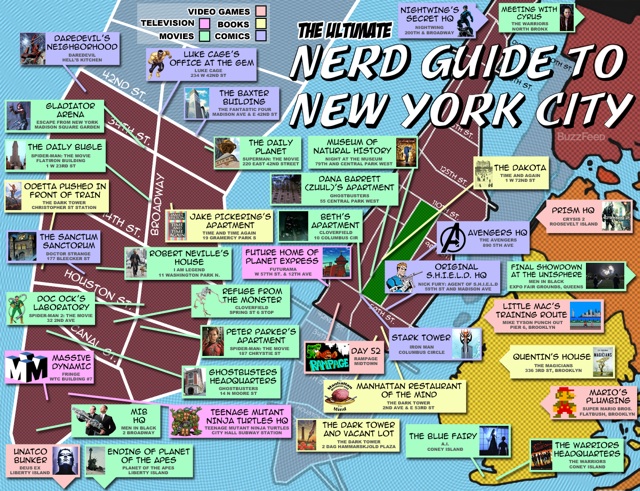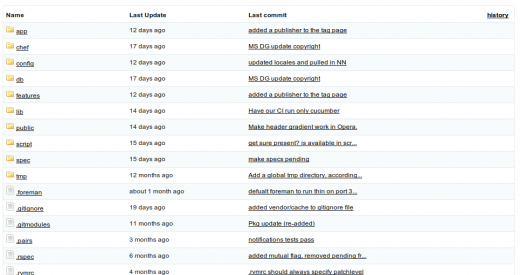Qualcomm demos 28nm Krait, expects to dominate Android devices in 2012:

Pop quiz. Would you rather have a dual-core or quad-core processor inside your next Android device? Common sense might lead you to believe that more cores are better, but it’s actually a lot more complex than that.
Last week Qualcomm invited me to their headquarters for a briefing on their upcoming Krait architecture and I got a hands-on preview with an actual Snapdragon S4 device. What I witnessed was the world’s first mobile system-on-a-chip (SoC) built on 28nm process technology with a fully integrated LTE multimode modem.
The demos I saw were not exactly mind-blowing (hence no video), but there are plenty of reasons to get excited about Qualcomm’s first Krait SoC.
Highlights of the Snapdragon S4 include:
- First on 28nm process technology: Snapdragon S4 processors are the first mobile processors to be manufactured using the latest 28nm process technology that provides inherent advantages in frequency scaling, power consumption and reduced size.
- First Fully Integrated 3G/4G: the S4 class includes the industry’s first fully integrated LTE world mode/multimode modem.
- First Mobile CPU to use the latest extensions to the ARM ISA: Snapdragon S4 processors are the first processors in the industry to be designed specifically for advanced process technology and using the latest extensions to the ARM instruction set architecture (ISA).
- Superior CPU Performance: Multicore CPUs with a frequency range of 1.5Ghz to 2.5Ghz per core and supporting asynchronous symmetric multiprocessing (aSMP) for the optimal balance of performance and power efficiency.
- Superior Modem Performance: The industry’s first fully integrated LTE world/multimode modem with support for the widest range of frequencies and bands – including full multimode support for existing standards such as EV-DO and HSPA. The modem also includes a full connectivity solution with integrated GPS Bluetooth, WiFi, and FM.
- Superior Graphics Performance: High performance programmable Adreno GPUs for the highest quality video and console quality gaming.
- Superior Power Efficiency: tight integration of best in class components and use of highly efficient, low power engines such as Qualcomm’s fully programmable Hexagon DSPs result in a highly power efficient system.
Mobile awesomeness built from scratch

Qualcomm’s key advantage over their competitors is that they design almost every part of the Snapdragon platform in-house and integrate everything on a single chip. The Snapdragon S4 MSM9860 features Qualcomm’s custom Krait CPU core, Adreno 225 GPU, LTE world modem, and Hexagon DSPs.
For those of you familiar with the Android handset manufactures, think of Qualcomm as the Samsung of the group. They are big enough to have the resources to customize everything and we expect greatness from them.
New Krait CPU Architecture
Krait is the codename for Qualcomm’s second-generation CPU and it offers 60% performance increase compared to the existing Scorpion micro-architecture found in the Snapdragon S1, S2, and S3.
This CPU core is different than the reference ARM Cortex-A15 core that will appear in competing SoCs around 2H 2012, but it still supports the latest ARM instruction set architecture and should offer comparable performance.
Krait includes a performance enhanced floating-point and SIMD functional unit called VeNom which maintains the industry leading 128-bit data-path, dual-channel memory subsystem, and still uses asynchronous Symmetrical Multi-Processor system or aSMP.
Qualcomm’s aSMP allows independent clock speed and voltage for each CPU core, which they claim results in a 25-40% power improvement over synchronous SMP architectures. Each core can be completely collapsed when not being used, so standby power should be improved.
This approach is quite different from NVIDIA that designed their own Variable Symmetric Multiprocessing (vSMP) technology, so it will be interesting to see which approach delivers the best battery life.
Qualcomm says they evaluated using a similar “companion” core like NVIDIA, but decided that aSMP offered the best power and performance. In fact, Qualcomm even took a shot at NVIDIA in their latest whitepaper by saying “aSMP also eliminates the need for ‘companion’ or ‘little’ cores since each core in an aSMP system can be operated in low power mode due to the independent voltage and frequency control per core thus reducing the need for hypervisors or more complex software management of disparate cores.”
Adreno 225 GPU

The first Snapdragon S4 will be accompanied by the Adreno 225 GPU, which offers a 50% performance boost over the Adreno 220 found in the Snapdragon S3. Most of the performance gains come from the higher GPU clock speed, which is now at 400MHz compared to 266MHz of the Adreno 220.
Qualcomm showed us some preliminary benchmarks which told us the Adreno 225 GPU should out-perform the industry-leading PowerVR SGX543MP2 found in Apple’s A5 SoC.
The Adreno GPU has normally lagged behind other mobile GPUs in raw performance, so it’s nice to see them match the latest from PowerVR. Later this year Qualcomm will migrate to the Adreno 3xx GPU when they release a quad-core Snapdragon, which promises graphics comparable to the PS3.
LTE world modem
The most notable feature of Qualcomm’s Snapdragon S4 is the industry’s first fully integrated 3G/4G world/multimode LTE Modem. This thing supports all of the world’s leading 2G, 3G, and 4G LTE standards and it integrates GPS, Bluetooth 4.0, WiFi, FM, and NFC.
What this means to the average consumer is 4G LTE smartphones that are thinner than a pencil. Most of Verizon’s 4G LTE handsets are quite bulky, but the next generation of LTE devices should be some of the thinnest around.
Longer battery life is also in store thanks to a power saving methods that lower power consumption by 20-30%. The new 8960 modem also supports simultaneous voice and LTE data, so you can browse the web at blazing fast speeds while maintaining a voice connection.
Hexagon DSP
In addition to designing custom CPUs, GPUs, and modems, Qualcomm also designs its own custom digital signal processors (DSPs). The Hexagon DSP has always played an important role in the Snapdragon processors, but Qualcomm is now sharing more details as they take it to the next level.
DSPs play an important role in multimedia and improve performance and battery life by freeing up CPU cycles and taking on additional tasks such as multimedia, imaging enhancement, augmented reality, and other functions.
The Hexagon DSP combines the best features of both CPU and DSP architectures. Unique to the Hexagon DSPs is the addition of a memory management unit, symmetric multiprocessing support, and a hypervisor for increased capability.
Qualcomm also recently opened up their DSP access program that allows OEMs to develop custom DSP applications to further enhance the Snapdragon processor operation.
Availability and Competition
Looking at the first half of 2012, it appears to be battle of NVIDIA and Qualcomm. NVIDIA will have the first mobile quad-core processor (at 40nm) and Qualcomm will have the first 28nm dual-core processor.
Qualcomm said we should expect to see devices with the Snapdragon S4 in the first half of 2012. This could happen as soon as early Q1 2012, but it could also slip to Q3.
NVIDIA is expected to regain the performance and power consumption crown with their first quad-core Kal-El (Tegra 3) devices in November, so I expect that Qualcomm is working with their customers to get Snapdragon S4 devices out as soon as possible.
The Snapdragon S4 mobile development platforms that we played with were dated July and we also overhead that some OEMs already had prototype consumer devices they were testing. My suspicion tells me that Qualcomm will wait for Google to release the source code for Ice Cream Sandwich and then release devices once all the optimizations and tweaking is finished.
Samsung and Texas Instruments will also have new processors out in the first half of 2012, but it appears they are offering more of the same tech we have already seen at faster speeds. Samsung will have a dual-core 1.5 GHz Exynos 4212 at 32nm and TI will have a dual-core 1.8 GHz OMAP4470 at 45nm. Both chips should offer improved performance and batter life, but they are not pushing the limits like NVIDIA or Qualcomm.
Overall, I think the Snapdragon S4 will be Qualcomm’s most successful Snapdragon to date. The move to 28nm process technology and new Krait core should offer industry leading performance and battery life.
The biggest question for me at this point remains the exact availability of consumer devices. Anyone looking for a high-end Android tablet this Christmas will obviously go with a Kal-El device, but the decision will not be so clear once the new Snapdragon devices come to market. Qualcomm should regain the performance crown if their claims hold true, but we will have to wait and see.
Which mobile processor are you looking forward to the most? Would you rather pick up a quad-core Kal-El tablet this Christmas or hold out for next year when the Snapdragon S4 arrives?

 The dark, cold, and rainy season is rapidly approaching the Northern Hemisphere. Before you dip into a mild depression, make sure you stock up on lots of fruit, Vitamin D, and a steady source of humor. To help you with the latter, I have compiled a list of technology acronyms and their meanings, decoded through the lens of a humorist. Maybe they can bring some giggles into bleak days.
The dark, cold, and rainy season is rapidly approaching the Northern Hemisphere. Before you dip into a mild depression, make sure you stock up on lots of fruit, Vitamin D, and a steady source of humor. To help you with the latter, I have compiled a list of technology acronyms and their meanings, decoded through the lens of a humorist. Maybe they can bring some giggles into bleak days.














 Dennis M. Ritchie, co-creator of
Dennis M. Ritchie, co-creator of 


